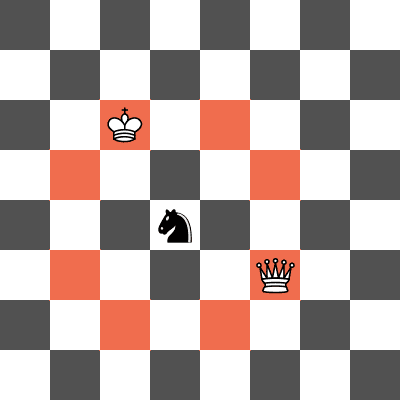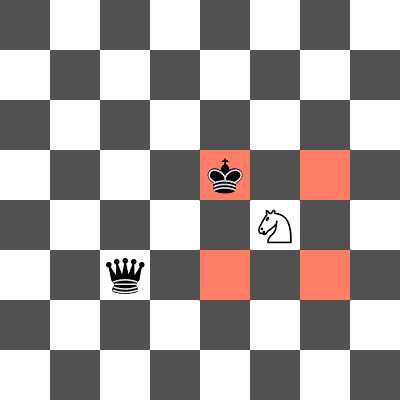CF1904A.Forked!
普及/提高-
通过率:0%
AC君温馨提醒
该题目为【codeforces】题库的题目,您提交的代码将被提交至codeforces进行远程评测,并由ACGO抓取测评结果后进行展示。由于远程测评的测评机由其他平台提供,我们无法保证该服务的稳定性,若提交后无反应,请等待一段时间后再进行重试。
题目描述
Lunchbox is done with playing chess! His queen and king just got forked again!
In chess, a fork is when a knight attacks two pieces of higher value, commonly the king and the queen. Lunchbox knows that knights can be tricky, and in the version of chess that he is playing, knights are even trickier: instead of moving 1 tile in one direction and 2 tiles in the other, knights in Lunchbox's modified game move a tiles in one direction and b tiles in the other.
Lunchbox is playing chess on an infinite chessboard which contains all cells (x,y) where x and y are (possibly negative) integers. Lunchbox's king and queen are placed on cells (xK,yK) and (xQ,yQ) respectively. Find the number of positions such that if a knight was placed on that cell, it would attack both the king and queen.
输入格式
Each test contains multiple test cases. The first line contains an integer t ( 1≤t≤1000 ) — the number of test cases. The description of the test cases follows.
The first line of each test case contains two integers a and b ( 1≤a,b≤108 ) — describing the possible moves of the knight.
The second line of each test case contains two integers xK and yK ( 0≤xK,yK≤108 ) — the position of Lunchbox's king.
The third line in a test case contains xQ and yQ ( 0≤xQ,yQ≤108 ) — the position of Lunchbox's queen.
It is guaranteed that Lunchbox's queen and king will occupy different cells. That is, (xK,yK)=(xQ,yQ) .
输出格式
For each test case, output the number of positions on an infinite chessboard such that a knight can attack both the king and the queen.
输入输出样例
输入#1
4 2 1 0 0 3 3 1 1 3 1 1 3 4 4 0 0 8 0 4 2 1 4 3 4
输出#1
2 1 2 0
说明/提示
In the first test case, the knight can move 2 squares in one direction and 1 square in the other (it is essentially the same as the knight in standard chess). A knight placed on (2,1) or (1,2) would attack both the king and queen.
 Example of a knight placement that forks the queen and king in the first test case. The squares that the knight attacks are highlighted in red.In the second test case, a knight placed on (2,2) would attack both the king and queen.
Example of a knight placement that forks the queen and king in the first test case. The squares that the knight attacks are highlighted in red.In the second test case, a knight placed on (2,2) would attack both the king and queen.
 Example of a knight placement that does not fork the queen and king in the second test case. The knight attacks the king but not the queen.In the third test case, a knight placed on (4,4) or (4,−4) would attack both the king and queen.
Example of a knight placement that does not fork the queen and king in the second test case. The knight attacks the king but not the queen.In the third test case, a knight placed on (4,4) or (4,−4) would attack both the king and queen.
In the fourth test case, there are no positions where the knight can attack both the king and the queen.
(Credits to EnDeRBeaT for the nice images)